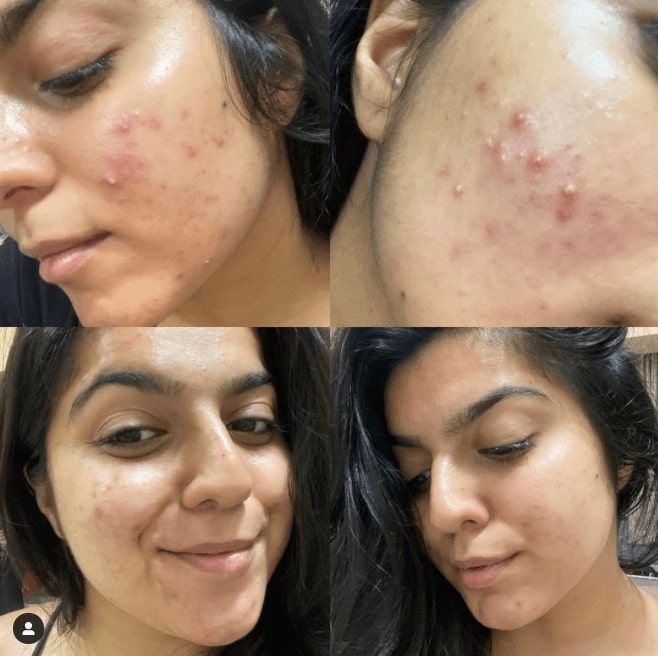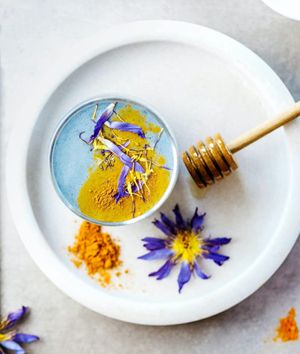So, you got rid of your acne, but do the scars continue to haunt you? Acne scars are a cruel reminder of past skin struggles and a massive hurdle in achieving flawless skin. What is even worse is the fact that they continue to linger on the skin for much longer than the actual acne that caused them. Is flawless skin a far-fetched dream for those with acne-prone skin? No! With the appropriate treatment, acne scars can be eradicated! Here are some expert tips on how to get rid of acne scars.
The Different Types Of Acne Scars
Did you know that acne scars come in a variety of shapes, sizes, and forms? Blemishes, deeper scars indentations, and raised scars left behind by acne are all commonly referred to as "acne scar". Some of the most ubiquitous forms of acne scars are ice pick scars, box scars, and rolling scars. Ice pick scars appear as narrow indentations while box scars are oval depressions on the skin. Rolling scars, on the other hand, are indents with sloping edges that impart a wavy appearance to the skin. Indented acne scars are usually formed by premature squeezing or picking of the acne. They are indicators of the underproduction of collagen in the area.
Unlike the indents, hypertrophic scars and keloid scars are raised scars. Hypertrophic scars are raised scars that occur at the site of bruising due to excessive production of collagen. Keloids are similar to hypertrophic scars but grow beyond the site of bruising on the skin and are larger. This noticeable scar is usually formed by the overproduction of collagen during the skin healing process.
As may be obvious at this point, how to get rid of acne scars that are indentations is a whole different ball game compared to the treatment of raised scars. We will explore these treatments in the upcoming sections. But first, let us bust a skincare myth!
Acne Scar vs Pigmentation
Contrary to popular belief, blemishes left behind by acne aren’t scientifically referred to as scars. Blemishes occur due to post-inflammatory hyperpigmentation. These are spots of hyperpigmentation caused by trauma to the skin that occurs due to acne. Since hyperpigmentation is not indicative of follicular damage, it does not classify as scarring. It occurs more commonly in darker skin types due to higher melanin levels. In the case of skin trauma, the melanin cells amp up the melanin production, which appears as blemishes or spots on the skin. So, if you suffer only from hyperpigmentation and not scarring, you may need a different skincare approach from how to get rid of scars!
Treating Acne Scars Based On Their Type
As there are different causes behind the different kinds of acne scars, the acne treatments for each type differ too. If you’re trying to figure out how to treat acne scars, the first step is to identify the type of scarring on your face. If you suffer from keloids, you must visit a dermatologist who can offer you steroid shots or surgical removal based on the intensity of scarring. Indentations, on the other hand, can be tackled by a variety of treatments ranging from laser therapy to microdermabrasion.
A lot of dermatologists lean towards microneedling when it comes to indents. Since these acne scars are caused by the underproduction of collagen, microneedling offers a boost to collagen production. It essentially refers to creating micro-wounds on the skin which encourage the body to generate more collagen. If this sounds too intimidating then chemical peels are another alternative to look into. These peels consist of exfoliating acids that encourage faster skin cell renewal, thereby reducing the depth of scarring with each sitting.
Acne Prevention
Let's make sure to do everything in order to prevent the appearance of the new acne.
- Food - Certain foods such as dairy, processed, and deep-fried foods products can cause acne inflammation, so it's best to cut them out of our diets.
- An imbalance in your hormone levels can cause cystic acne, so you might want to get them checked.
- Sunlight - Sun exposure also increases the production of hormones that aggravate acne.
- Consider trying skincare products containing Benzoyl Peroxide
- The use of makeup - If you’re prone to breakouts then wearing heavy foundations or thick concealers may irritate your skin and make matters worse!
- Keep your makeup brushes and tools clean to make sure they don't have any acne causing bacteria on them
- How you use your skincare products matters too! Avoid rubbing them into the skin as it can cause more irritation and make existing acne worse.
- Abrasive scrubs can cause micro-tears in the skin, which is how you often get new acne.
- Finally, it's important to avoid touching your face too much! This means that if you're prone to popping pimples then stop immediately and don't touch them with dirty fingers or hands in order to prevent severe acne and reduce inflammation.
How to Treat Acne Scars at Home

Chemical Peels:
If you choose not to visit a dermatologist’s clinic, the good news is that you can also opt for an at-home chemical peel. There is a lot of good salicylic acid and lactic acid, AHA, BHA chemical peels available in the market that are meant for home use. Just be sure to follow the instructions on the packaging and always perform a patch test first. Also, use gentle and hydrating ingredients on your skin after using such salicylic acid chemical peel, and always wear sunscreen during the day. These peels are usually not as strong as the ones used by a dermatologist, so it may take longer for the acne scarring to disappear from your face. With weekly use, they should give you visible results within a month or two!
Microneedling
If you’re looking to treat acne scars, microneedling is another effective method. It might sound intimidating but it’s actually quite easy. All you need to do is purchase a microneedling device (such as the 0.75mm Derma Roller ) and follow these steps:
Use gentle pressure while rolling over all areas of your face, but be careful around sensitive acne spots! These devices are very safe when used correctly, so don't worry about doing damage if your skin turns red during treatment.
Apply an antioxidant serum immediately after rolling for best results. Make sure that it is a vitamin C serum that helps in collagen production and lightens scars as your skin heals too! You can also try products containing peptides because they increase boost collagen and can heal acne scarring gradually.
If you visit a dermatologist, then they’ll usually prescribe stronger medications for this procedure such as Retin-A or Tretinoin to your skin before hand which will help in faster results. They may also use laser treatments along with microneedling because these lasers encourage the formation of new collagen!
LED Light Therapy
Blue light therapy
Blue Light Therapy is the type of light therapy most commonly used to address acne breakouts.
The wavelength of blue light has an antimicrobial effect, making it effective at killing several types of bacteria that can collect in your pores and oil glands and cause breakouts.
In one study, people with acne who were treated for five weeks with blue light therapy saw improvement in 77% of cases: Source
Blue light therapy also helps condition your skin, getting rid of free radicals that oxidize and age your face. The treatment also has anti-inflammatory benefits, which decrease other symptoms of acne, such as redness.
Red light therapy
Red Light Therapy doesn’t have the same antibacterial effects of blue light therapy, but it can still be effective.
Red light therapy helps promote healing and may work to decrease the visibility of acne scarring. It also has anti-inflammatory capabilities.
Red light therapy works deep below the surface of your skin to help soothe and repair tissue. If your acne is caused by a chronic skin condition, red light therapy might be the choice for you.
Rosehip Oil
Rosehip oil is one of the most versatile oils available on the market today. It contains a high concentration of fatty acids, including linoleic acid. This acid is important because it both locks moisture in and prevents irritants from entering your skin. Linoleic acid is an important ingredient for skincare since it helps to prevent blemishes. Rosehip oil has a high linoleic acid content, making it an effective acne fighter.
Rosehip oil is also rich in vitamin A which helps heal the skin quickly by increasing boost collagen. This is how rosehip oil actually helps to reduce the appearance of any acne scar!
The best thing about rosehip oil is that it’s incredibly safe and gentle on all types of skin, so you can apply it without worry even if your skin tends to be more sensitive or easily irritated by products containing harsh chemicals. Rosehips are also rich in antioxidants, making it an ideal choice for repairing your skin.
Of course, if you use these products together with a good diet and plenty of water to keep hydrated on the inside too, then they’ll be even more effective at treating acne scars! Source
Treatment Options For Hyperpigmentation
If you only suffer from post-acne hyperpigmentation and no scarring then I have some good news for you! Hyperpigmentation fades with time on its own! Yes, even if you do not treat the acne marks on your skin, they will fade over time. However, if you don’t want to wait for long, you can speed up the process with the help of certain treatments. Here are some of the best ways to get rid of hyperpigmentation.
- Topical Treatments – With so many actives available in over-the-counter skincare products, hyperpigmentation is easily treatable! One of the most vouched for ingredients is Vitamin C, which boosts collagen production in your skin. It also brightens and evens the skin tone and adds a natural glow to the face. At-home peels containing AHAs and BHAs are another option that offers instant results. These are wash-off masks that contain a high concentration of exfoliating acids such as salicylic acid, glycolic acid, and lactic acid to encourage faster cell turnover and removing dead skin cells and acne marks. Another alternative is a retinol-based serum, which again increases the rate of cell renewal to reduce hyperpigmentation. Opt for any one of these ingredients to heal your hyperpigmentation at a faster rate.
- Light Therapy – Red LED light has been found to help with hyperpigmentation. It reduces inflammation, boosts collagen, and encourages cell repair. You can opt for light therapy at a dermatologist’s clinic or can even go for a handheld gadget to use at home. The latest launch in this domain are masks that offer light therapy! This technology may not provide instant results but will definitely help fade your blemishes over time.
- Using Retinol-containing products is another very effective way to get rid of hyperpigmentation. Retinol works by increasing the cell turnover rate, which means that it helps your skin to shed older cells and replace them with newer ones more quickly! This results in even-toned skin.
These are some of the skincare industry’s trusted methods on how to get rid of scar tissue. No matter what kind of scars you got, there is a solution, thanks to the advancement of technology!
And if you are someone who is suffering from acne scars, remember the most important thing, you are beautiful the way you are! 💓 💗 💖
FAQ
How do you get rid of acne scars naturally?
Acne scars can be removed at home by combining microneedling, LED light therapy, and the use of correct skincare products geared towards your specific scar types.
How do I get rid of acne scars fast?
Unless you opt-in for professional treatments, removing acne scars at home will take time. If you need fast results, the best course of action if to consult with your dermatologist.
Do acne scars ever go away?
If you are not treating them, chances are your scars won't go away by themselves.
How long do acne scars last?
Unlike the dark spots that tend to fade away over time, scars may stay on your skin surface indefinitely unless treated.





